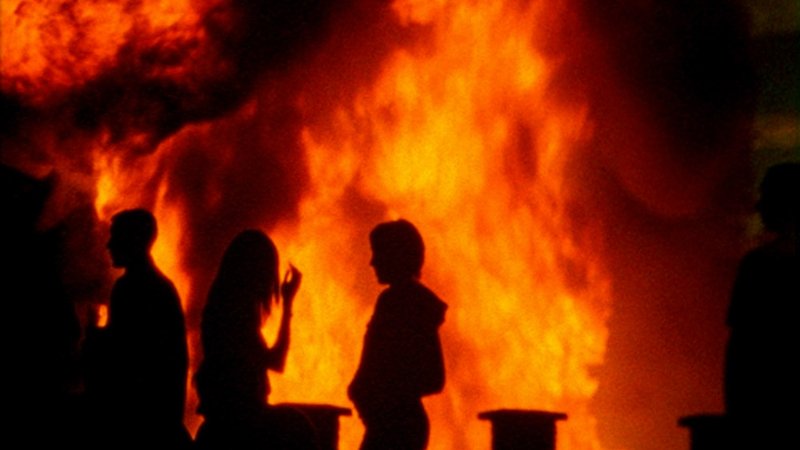New Zealander Alex Monteith’s open-ended, experimental documentary invites us to consider her images of a Northern Ireland ‘defined by the troubles’, and to listen to the eloquent voices of the troubled.

Screened as part of NZIFF 2005
Chapter and Verse 2005
Alex Monteith’s haunting and haunted experimental documentary invites us to consider her images of Northern Ireland. Some are composed with limpid formal beauty, others in the hand-held style of news coverage, some in colour, others in black and white, and most of them are related only obliquely to the eloquent expressions of personal and political perspective heard on the soundtrack. Her open-ended, contemplative approach to representing historical struggle is clearly influenced – as she is the first to admit – by Godard. So is her unerring editorial sense of the uses of duration and interruption to startle an attentive audience. While we listen to a catalogue of the dead, the camera seems to scrutinise the landscape for signs of violence, and the effect is disturbingly akin to that of Resnais’ footage of the abandoned Auschwitz in Night and Fog. The film was shot over three years in locations defined by the Troubles, including the Bogside in Derr. It also looks at the small and often-bombed border town of Castlederg, County Tyrone. It includes excerpts recorded with politicians, members of the security forces, relatives of victims of the Troubles, religious figures, civilians and academics. — BG
For years the Troubles constrained the way in which Northern Ireland’s political situation could be interpreted. An Irish film critc Louisa Burns-Bisogno once noted that in a society’…where the present is relatively stable and uncomplicated, the facts of the past are important, but not a matter to get passionate about… where present the reality is one of instability, division and danger, the facts about the past become critical’. I wished this film to combine my love of experimental film methods with material recorded in my native birth country of Northern Ireland. It has been over ten years since the 1994 ceasefire in the North and as time has passed artists have new freedoms to revisit how the Troubles have been represented. It is now possible to look for ways to represent the conflict that could not have been done during the worst of the violence because it all seemed too close. I felt experimental film practice could bring viewers to the Troubles in ways that had not been seen before, quoting Laura Marks, allowing ‘…inconceivable events to remain inconceivable, while insisting that they must be conceived of.’ — Alex Monteith